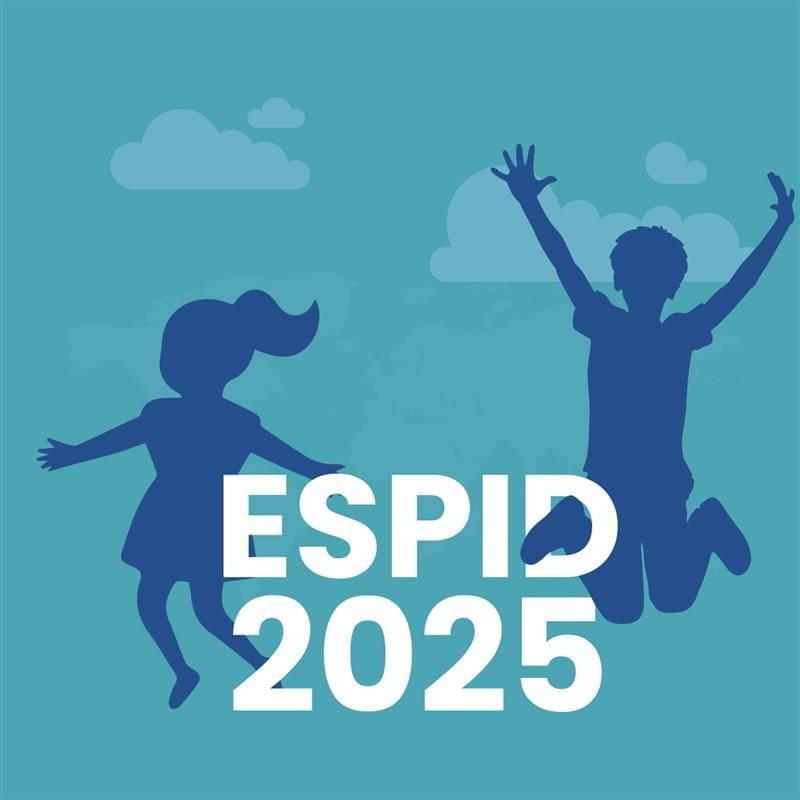ESPID 2025: Research Session 04: Training for Improving Practices in Infection Prevention & Control and Antimicrobial Stewardship in the Pediatric Population: The Team-Coach Project
AMS Programs and IPC Programs in the Pediatric Population: Where are We?
Speaker: Walter A. Goycochea Valdivia, Spain
Introduction:
The session, delivered by a pediatrician from Seville, Spain, focused on the current status and challenges of antimicrobial stewardship programs (ASPs) and infection prevention and control (IPC) efforts in pediatric settings, supported by a real-life case from the NICU.
Case Study: Luis and Salma:
- Luis: Extremely premature infant (26 weeks, 850g), multiple complications including NEC (necrotizing enterocolitis) and short bowel syndrome, prolonged broad-spectrum antibiotic use (vancomycin, meropenem), later developed sepsis from Klebsiella pneumoniae (NDM-1 producer), an extensively drug-resistant organism—necessitating last-line treatment with cefiderocol.
- Salma: Preterm with congenital heart disease, transferred from another hospital, unknowingly colonized with MDR bacteria. Due to delayed MDR screening—conducted six days post-admission—she was not identified early, and IPC precautions were not implemented. By the time her colonization was detected, Luis had already developed sepsis, likely from cross-transmission.
Takeaway: Missed opportunities in early detection, IPC breaches, and prolonged antibiotic exposure contributed to MDR infection risk.
Why Pediatric ASPs and IPC Matter?
- Rising antimicrobial resistance (AMR) is a global threat.
- 2016 O'Neill Report and 2019 Lancet study estimated 4.95 million deaths linked to AMR.
- MDR pathogens (e.g., E. coli, K. pneumoniae) increasingly difficult to treat with available antibiotics.
- Limited pipeline for new antibiotic classes highlights the importance of preserving current antimicrobials.
Gaps in Pediatric Guidelines:
Pediatric ASP and IPC guidelines lag behind adult protocols. ASP guidelines for children came over a decade after adult versions. IPC protocols are still often extrapolated from adult practices, lacking child-specific recommendations.
Principles of Antimicrobial Stewardship:
Five key questions in evaluating antibiotic therapy:
- Is antimicrobial use still indicated?
- What is the likely infectious syndrome?
- Which samples are needed?
- What is the optimal drug, route, dose, and duration?
- Has infection source control been achieved?
Four Moments of ASP:
- Diagnosis and empirical therapy
- Microbiological results to narrow/stop/change therapy
- Set appropriate duration
- Monitor and reassess therapy
Effective ASP Strategies in Pediatrics:
- Before prescription: Guidelines, restrictive formularies
- After prescription:
- Educational & consensus-based interventions (most effective in pediatrics)
- Peer review and expert consultation
- Ongoing: Active/passive education for long-term impact
Monitoring ASP Impact:
- Process indicators (easier to measure): e.g., antimicrobial consumption, adherence to guidelines
- Outcome indicators: harder to measure in children (e.g., mortality, AMR trends)
- Preferred pediatric metric: Days of Therapy (DOT) over Daily Defined Dose (DDD) (weight-independent)
- Example from Barcelona: ASP implementation led to a clear drop in antibiotic consumption
Challenges in Pediatric ASP/IPC:
- Low mortality and low toxicity incidence make outcome tracking harder
- Few long-term studies, limited data from primary care
- Most existing studies focus on hospital settings with variable quality and heterogeneity
Improving IPC Implementation:
- Evidence exists for effective IPC bundles in children, but:
- Implementation barriers include lack of buy-in from staff and families
- Need for better training, behavioral change, and multidisciplinary involvement
Future Directions:
Emphasis on:
- Continuous education
- Digital tools and AI
- Behavioral science-based interventions
- Collaborative global research
ESPID 2025, 26-30 May, Bucharest



